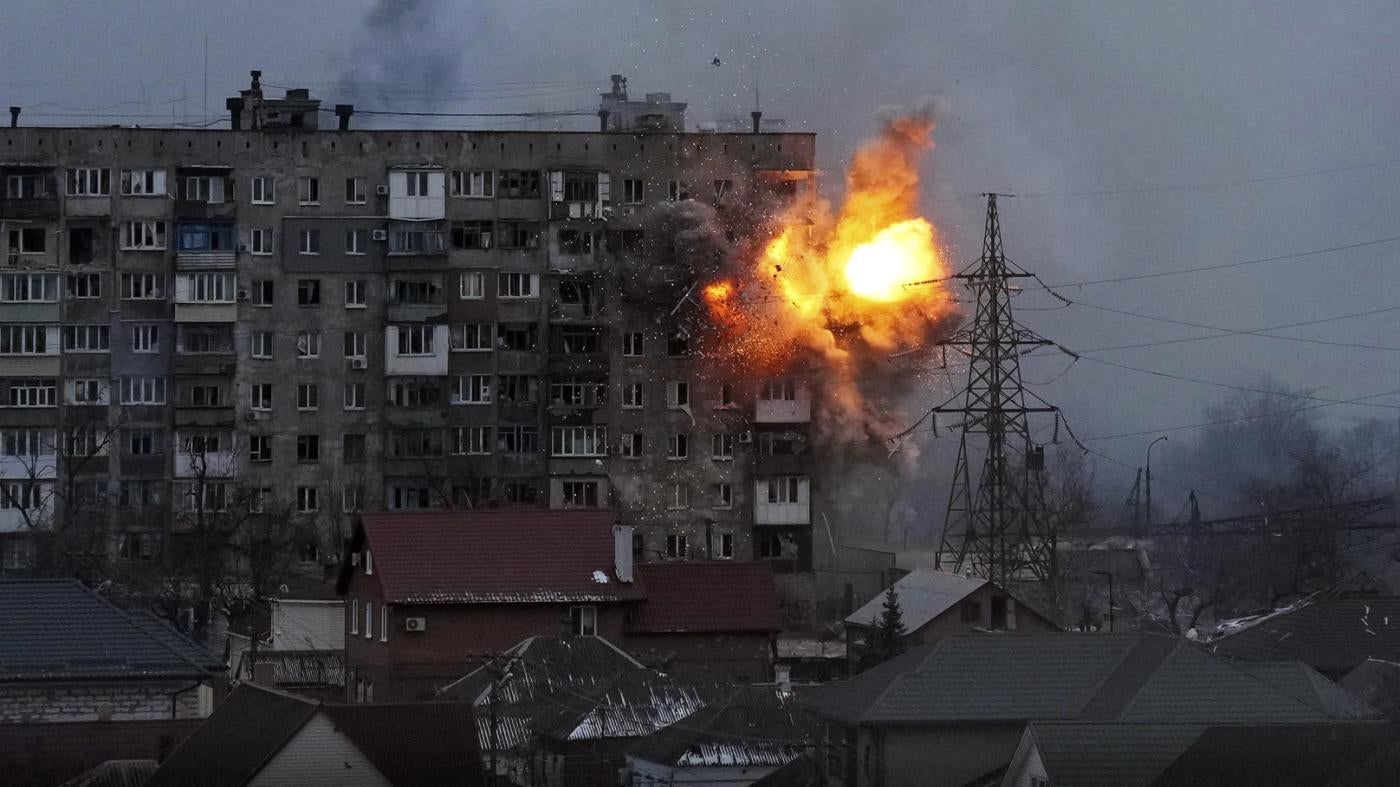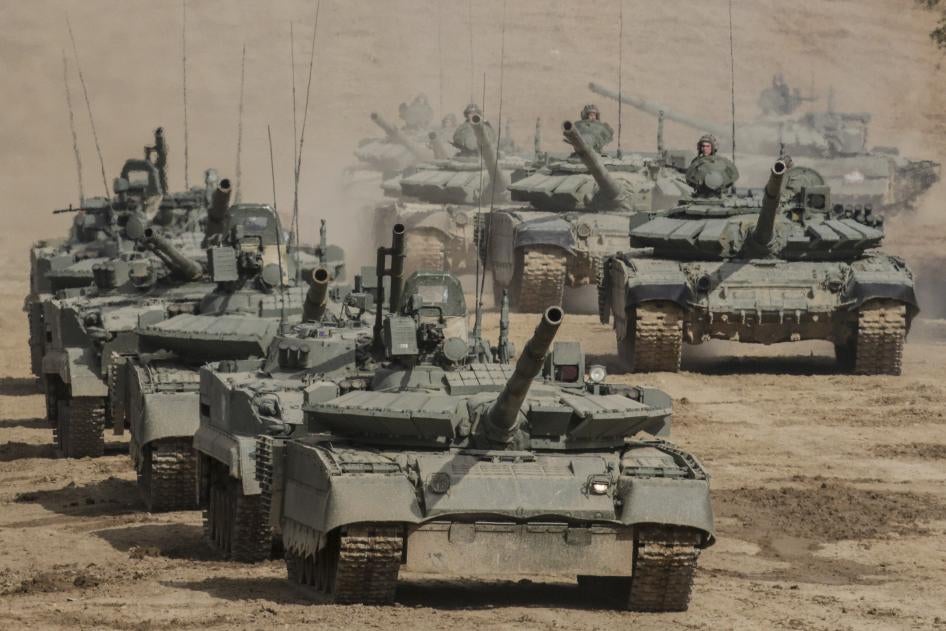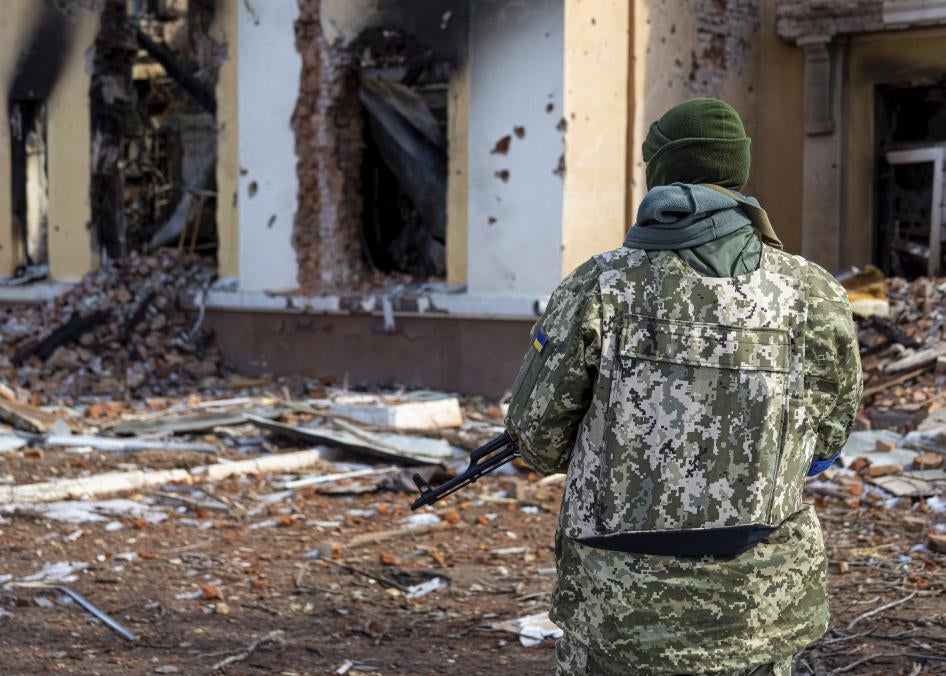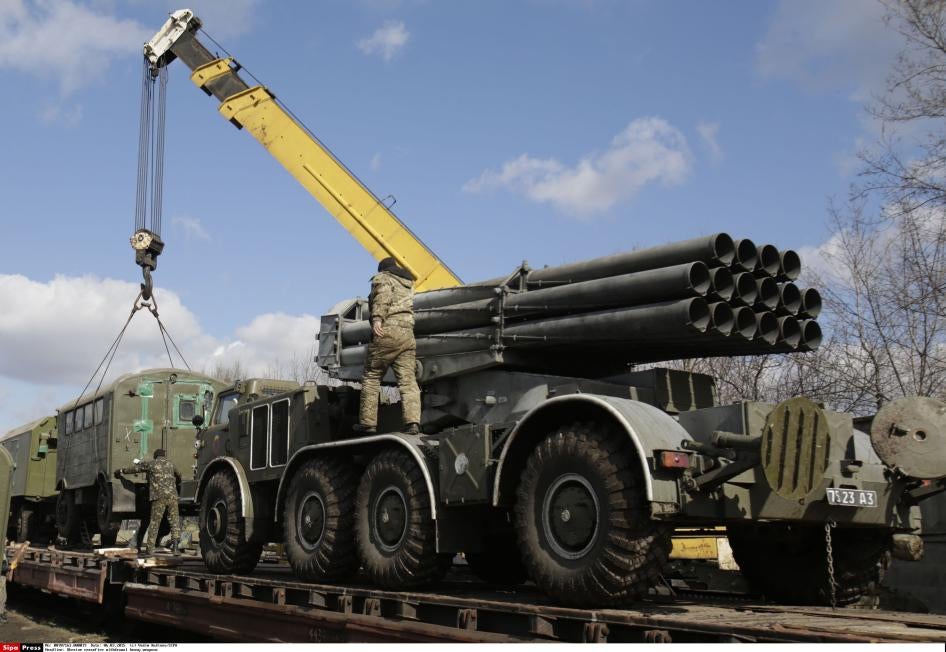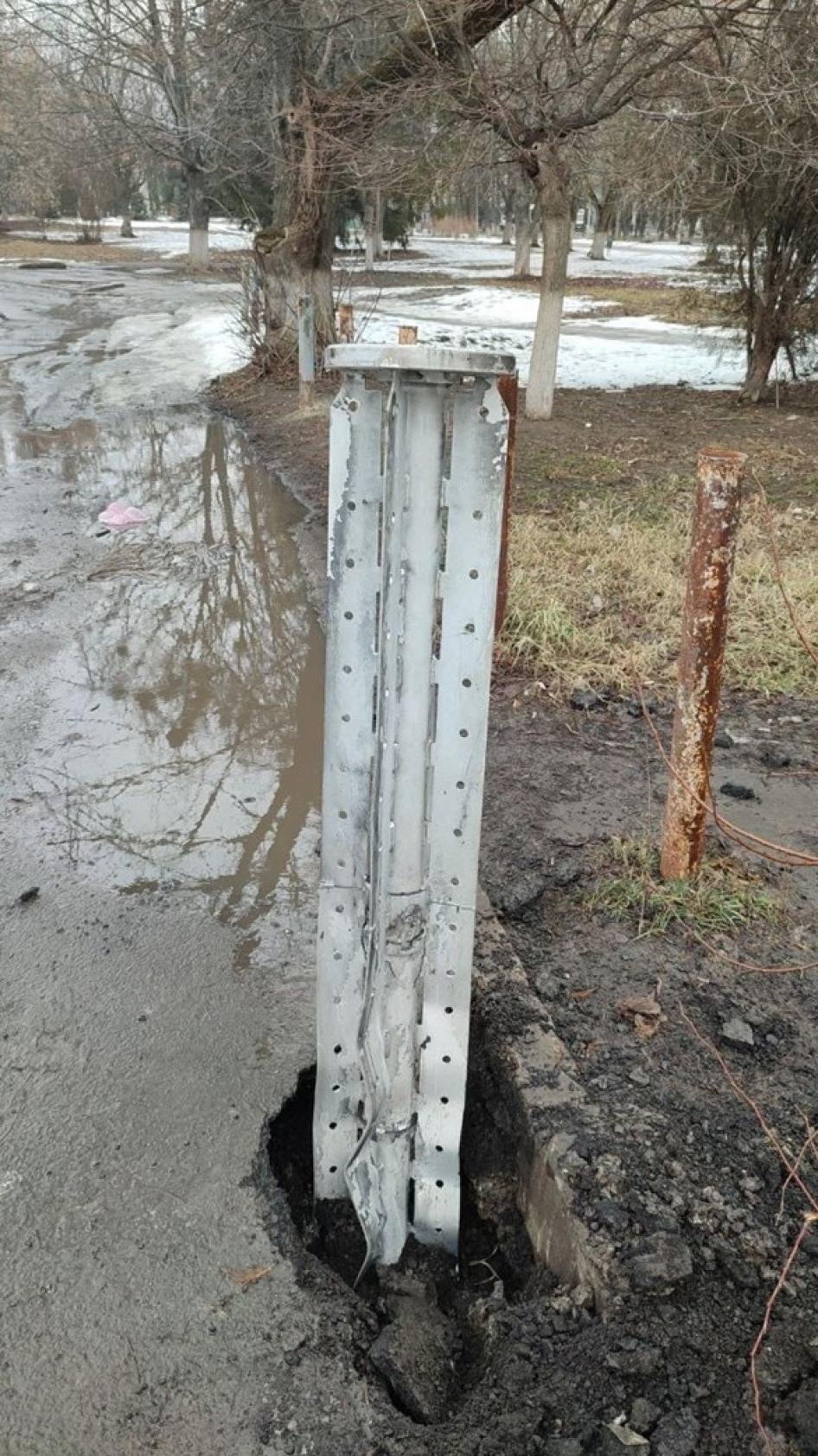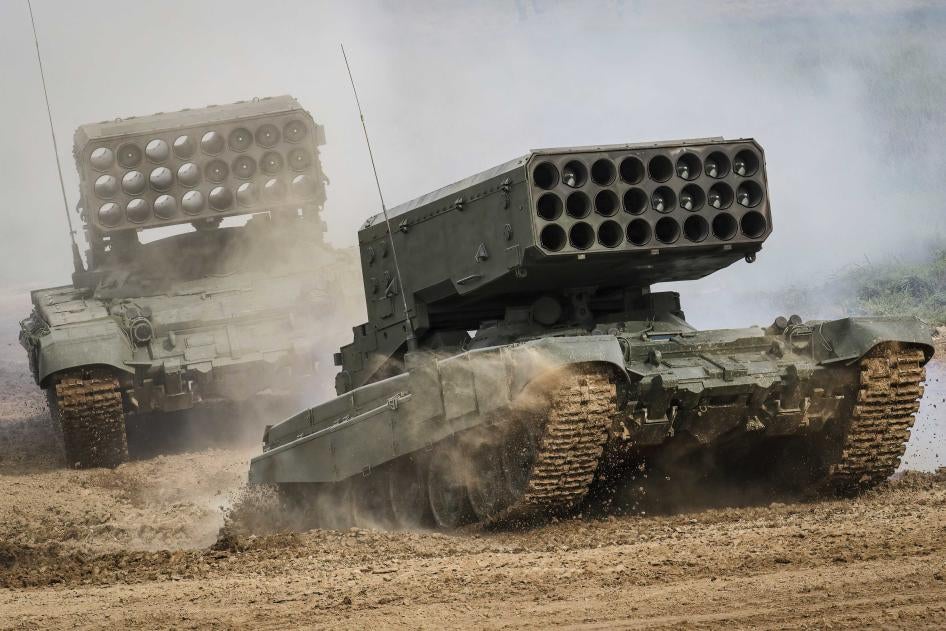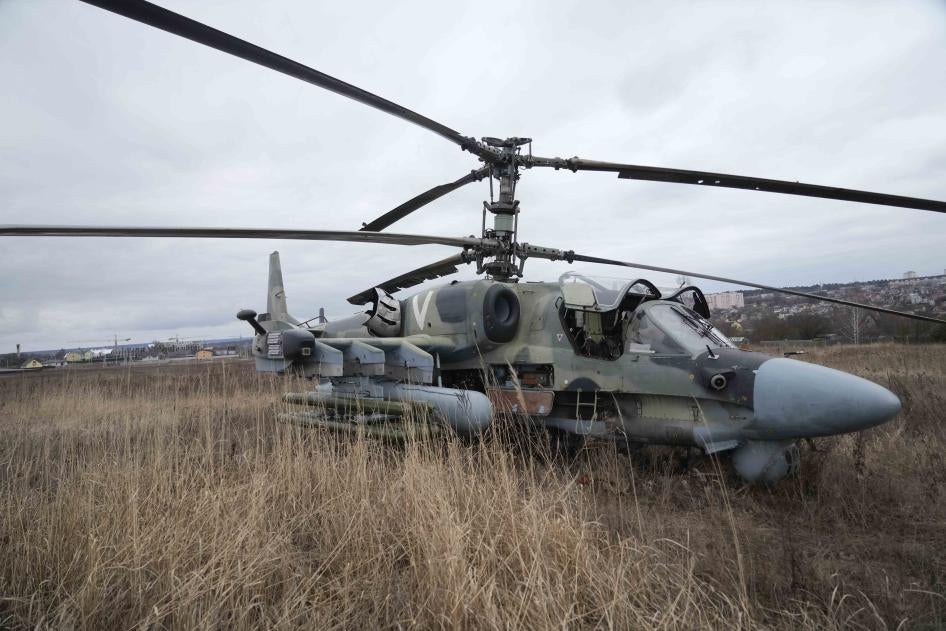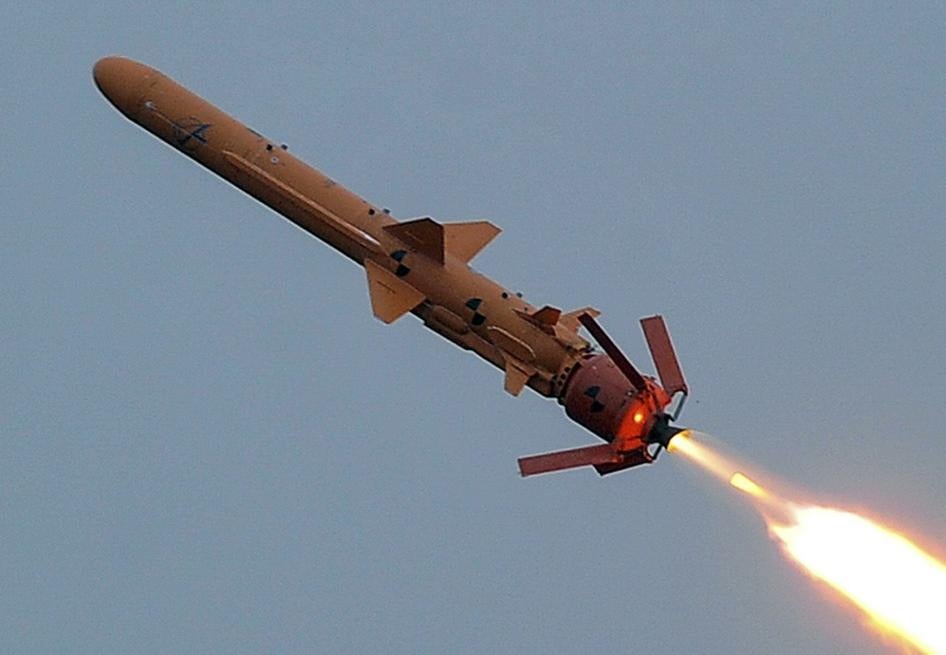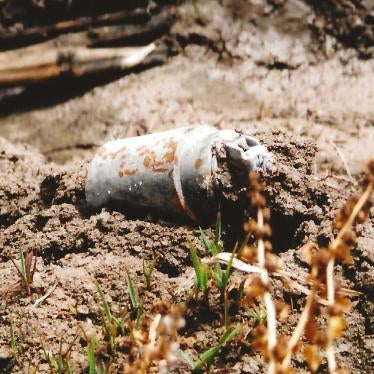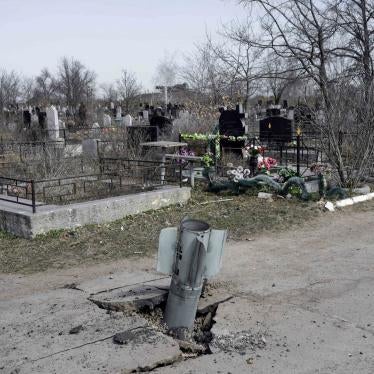What kinds of weapons are we seeing used in Ukraine?
On one hand we’re seeing the whole range of 70s and 80s vintage Soviet weapons that Russian and Ukrainian forces inherited. We’re seeing the use of some new types of weapons, particularly on the Ukrainian side with armed drones and certain guided missiles. Russia has also used some of their most advanced guided weapons and has used older weapons in a novel way, for example using a naval missile designed to destroy ships on an inland target.
And there is a lot of brute force with high explosives that hasn’t changed in decades.
At this stage in the conflict, we’re still looking through a straw and it’s really hard to understand the bigger picture. We tend to focus on high-casualty events, which tend to be in large cities, and we’re not really understanding what the close-in war on the village level looks like.
What is a high-casualty event and can you tell me about the ones that Human Rights Watch investigated?
The arms team is working in conjunction with other researchers in Ukraine to analyze attacks. Say a warplane drops eight bombs onto an apartment building. Are there any weapons remnants we can identify? Are there other elements like a bomb crater or a dashcam video to help us identify the weapons used? This gets melded together with testimony we gather from witnesses.
We do not send our researchers into areas of active fighting, in Ukraine or elsewhere, so they are collecting interviews over telephone or online and gathering photos and videos of events. We put all the pieces together to be able to tell the story and describe things in a way that is accurate and factual.
We also notice if there’s one type of weapons system that causes repeated harm, no matter how it’s used, one that causes high numbers of civilian casualties because it’s indiscriminate.
If we find such weapons, and if the international humanitarian law is not adequate to protect civilians from its effects, we begin to stigmatize its stockpiling, transfer, and use, and advocate for the international disarmament community to restrict or ban it.
What do you mean by indiscriminate weapons?
Discrimination is asking: Are the weapons used in the conflict reliable and capable of being used accurately? Can the weapons and the soldiers using them distinguish between a legitimate military target and civilians? The principle of “distinction” between military and civilian is the golden thread in international humanitarian law. Indiscriminate is also asking if the effects created by the weapon – fragmentation, blast, fire – are capable of being limited to the military target, or will they cause disproportionate harm to civilians?
We also talk about disproportionate attacks. What does that mean?
Disproportionate in the sense of using the means and methods of warfare appropriate to the situation, and not using weapons where the impact on civilians far outweighs the military gains. For example, not using a large explosive weapon that would demolish an apartment building in response to an individual sniper on the roof. Depending on the circumstances, this could be considered causing disproportionate harm to civilians.
You’ve seen cluster munitions used in Ukraine. Could you tell me more about them?
They are a larger weapon like an airdropped bomb, artillery shell, or missile, that instead of carrying one big piece of high explosive, contains tens or even hundreds of smaller submunitions. The carrier weapon opens in the air and scatters those submunitions across a wide area, say, the area of a football field. This allows a single carrier bomb to destroy numerous targets instead of just one.
The dispersion is also the fatal flaw of cluster munitions: The weapons’ effect is spread out over a large area. If it’s tanks in the desert with no civilians around, that’s one story. But if the tanks are in an area with a lot of civilians, there’s no way to contain the effects of the weapon to your military objective.
That leads to the additional problem with cluster munitions, the unreliability of the submunitions. A certain percentage of the submunitions, sometimes 25 percent or more, fail to detonate upon impact as designed. They remain on the ground in an armed and unstable state. Because these unexploded submunitions can be brightly colored, have ribbons attached, and can be shaped like small balls or cylinders, they can attract curious people, including children, often with fatal results.
Cluster munitions were initially used in World War II and have been widely used in Southeast Asia, particularly in Laos, in the 1960s and 1970s. Modern cluster munitions have featured in many recent conflicts, from the US-lead Persian Gulf War against Iraq in 1991 to Israel’s attack of South Lebanon in 2006.
This latter example galvanized work towards an international treaty banning cluster munitions, which Human Rights Watch led and that went into force in 2010. The biggest military powers, like the US, China, India, Israel, and Brazil haven’t joined, but 110 countries have. This weapon has no place in war because of its indiscriminate nature, which is exhibited every time it is used. Civilians always pay the price.
Where have you seen cluster bombs used in this war?
We know that Russian forces are using cluster munitions extensively. We’re seeing use in highly populated areas like in the city of Kharkiv. We saw them used on the first day of the invasion in the Donetska region, where they hit a hospital. And we saw the repeated use of cluster munitions in the city of Mykolaiv, in southern Ukraine.
There are many other locations where we believe cluster munitions have been used. In short, we created graphics using photos of cluster munitions, explaining their parts, and we and other journalists and activists blasted these graphics out on twitter, asking people who saw such parts to share a photo and the location. Results have rolled in from all over.
Ukrainian forces have cluster munitions too. We documented them using them in 2014-2015, when Russian forces occupied Crimea and Russia-backed armed groups started taking control of parts of eastern Ukraine. We haven’t documented Ukrainian forces using them recently, but it is something we have our eye on.
Neither Ukraine nor Russia are party to the ban treaty.
Have you seen so-called “vacuum bombs” used in Ukraine?
That term vacuum bomb is the translation from Russian, but what’s meant are types of munitions that are also called fuel air explosives or thermobaric weapons. They all belong to a family of weapons called enhanced blast weapons, which are not banned under international law.
Enhanced blast weapons use the oxygen in the atmosphere as their fuel and create an explosive vapor cloud that is subsequently detonated. Because they don’t need to carry their own fuel, the amount of explosive the weapons contain is at least effectively doubled and they explode at a much higher temperature. The sudden consumption of the atmospheric oxygen has led people to talk about having the air sucked out of their lungs.
Because enhanced blast weapons cover a wide area, they are prone to indiscriminate use. In urban settings it is very difficult to limit the effect of these weapons to combatants or a military target. Also, the nature of enhanced blast weapons makes it virtually impossible for civilians to take shelter from their destructive effect. In an enclosed space their effect is magnified. If you’re in a building or a cave, there’s literally nowhere to hide.
Enhanced blast weapons can be airdropped as bombs or rockets, or they can be small, like grenades or shoulder-fired rockets. They are chiefly meant for killing people, to knock down structures, and destroy supplies.
Have you seen them in Ukraine?
We have seen several of the distinctive-looking larger launchers for the weapons in videos of Russian convoys heading into Ukraine. So, we know the weapons are there. We don’t have the research to know where they’ve been used. Last week on Twitter, there was a post of a Russian soldier getting a medal for using the system, but we don’t know where or the circumstances.
I only recently documented my first thermobaric weapon attack at Human Rights Watch. It was in Ethiopia’s Tigray region. On January 7, the government’s air force attacked a school compound hosting internally displaced Tigrayans, mainly older people, women, and children, with an armed drone. There were body parts in trees. Really, really chilling.
What about incendiary weapons?
There was an allegation that an incendiary weapon was used in a Ukrainian-controlled part of Luhansk earlier in the week, but nothing has panned out. I documented the use in eastern Ukraine in 2014 and in Syria.
In short, they’re weapons that use fire to kill people and destroy equipment. You use them to set vegetation on fire or burn buildings down.
There is a part of international weapons law that covers incendiary weapons, but it was written in the 1970s to cover the use of napalm in Vietnam, which is not how these weapons are used today. So, we’ve been trying to push for updated laws.
What are they?
They use chemical compounds to start fires. It can be tricky to put them out. There’s different types of chemicals and compounds used to create them. Napalm is essentially kerosene and polystyrene, or Styrofoam. You mix the plastic with the fuel and it gels and you have a petroleum-based fire that’s sticky when ignited.
Other incendiary weapons use chemical compositions like thermite or alloys of metals like magnesium that burn really hot for a long time.
Another substance used is white phosphorous, which rapidly creates thick smoke on the battlefield, but it also burns people and things. It has a very noxious garlicy smell. Militaries use this if they’re attacking a city that’s defended by people in holes or fortifications within the city. They smoke people out, then follow up with high explosives. That’s what the US did in Fallujah in Iraq.
White phosphorous isn’t considered an incendiary weapon by the military; they call it a smoke-generating munition, so it’s inherently dual purpose and it falls into a crack in the law.
Any other weapons that you’ve seen in Ukraine that are concerning?
The prolific use of explosive weapons, turning cities into rubble, destroying the underlying infrastructure. The use of explosive weapons in populated areas, or EWIPA, can be a difficult concept to get across in the diplomatic world. It’s not an effort to ban urban warfare. And the use of explosive weapons with wide area effects should be avoided in populated areas, due to the very high risks of indiscriminate and disproportionate impact on civilians.
Does Russia make all their own weapons?
Russia is a major arms producer and exporter. It still has a mountain of weapons from the Cold War that it uses. Russia imports technology, but they mostly use their own weapons.
Where do Ukraine’s weapons come from?
Ukraine is the same way. As part of the Soviet Union, Ukraine was a major weapons builder. Most tanks used by Russian forces were more than likely built in Ukraine. They not only have the raw materials but also the scientific know-how and workers. Kharkiv, in eastern Ukraine, is known for making tanks in what was once a tractor factory.
Ukraine inherited a huge pile of ammunition from the Soviet Union. During the Cold War, the reserve ammunition was kept in Ukraine. Most of it was stored in the open, boxes of ammo, maybe under a tin roof. You’ve had any number of ammunition explosions in Ukraine. So, they have a lot of ammunition that still can be used.
Ukraine has also been developing their defense industry as a source of revenue. The country has come a long way from where they were in 2014, when Russia first invaded. And now numerous countries are providing Ukraine with surface-to-air missiles, anti-tank missiles, and other technology like night vision devices. NATO countries and the US are sending modern weaponry to Ukraine right now.
You use social media a lot in your work. How does it help in your research?
Since the 2011 uprising in Libya, the information people share from conflict areas has just exploded. It’s both media doing its job and people with cameras on cell phones – they're capturing a lot of information. Also, security cameras are going at times of the attack, and in Russia and Ukraine there are dashcam cameras on most cars for insurance purposes. A lot of attacks are captured on those. Many people are aggregating information. I can find 15 photos of the same incident and it becomes a gold mine we use to begin piecing together what happened – what weapon was used, how it was used, what was going on.
How do you make sure the information you find on social media is legitimate?
Never relying on only one source. Also, digging, digging, digging. We have colleagues who do photo and video verification, geolocation work and other analysis. They are really good at finding possible sources. Also, researchers working on a country use their networks to find witnesses to events that they can call up. And we have to convince our own in-house lawyers that what we’re looking at is true. There’s plenty that we don’t go with because we don’t have enough information.
Anything else I haven’t asked that you’d like to add?
Human Rights Watch has five people working in our arms division. Four of us have been working on these issues for more than 20 years. And it’s not just Ukraine. I’m currently also working with researchers in Ecuador, Ethiopia, Libya, and Myanmar.
Also, my colleagues are campaigning at multilateral negotiations to ban killer robots, or fully autonomous weapons, the use of explosive weapons in populated areas, and incendiary weapons.
And we do identify patterns. The whole campaign to ban landmines started in the 80s and early 90s because groups that would become Human Rights Watch, as well as relief agencies and others, saw people from around the world without legs in conflict areas. And they sat down at the same table and said, we’ve got to get this banned. And in 1997 the convention banning antipersonnel landmines was successfully negotiated and went into force in 1999. We can see the impact.
*This interview has been edited and condensed.
